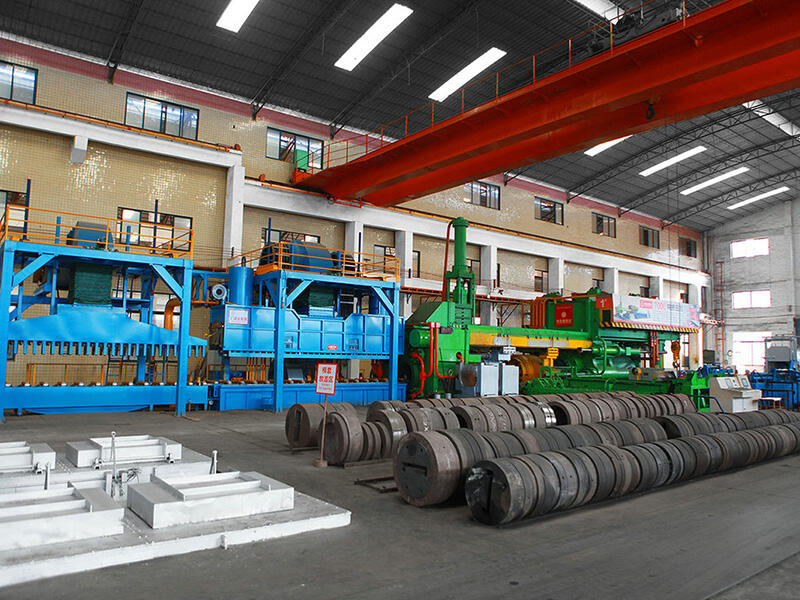Why Custom Aluminum Is Essential in Modern Design
Understanding custom aluminum fabrication and its growing demand
Custom aluminum fabrication demand shot up around 32% from 2022 according to the IAI Manufacturing Report. This growth comes as various industries look for materials that offer both light weight and solid structural integrity. What makes aluminum so attractive? Well, it can be recycled completely and naturally resists corrosion. These properties have made it the go to material for manufacturers concerned about environmental impact in fields like cars, planes, and green energy projects. Sustainability matters a lot here, along with getting precise results every time.
Design flexibility in aluminum fabrication for diverse industries
CNC machining opens up all sorts of possibilities when it comes to making those intricate shapes needed for lightweight aircraft components and adaptable building structures. Engineers can now create custom designs while still maintaining structural integrity, something that matters a lot in fields like robotics where precision down to the millimeter makes all the difference. Take medical device manufacturing as another case in point. The flexibility of aluminum really helps speed things along during the prototype phase too. Development times get cut by around 40% when working with aluminum instead of traditional steel methods, which explains why so many industries are switching over these days.
Aluminum's compatibility with aesthetic surface finishes for design precision
Anodizing and powder coating do more than just make things look good they actually boost how long products last too. Designers have access to around 60 standard colors plus all sorts of special textures that can be customized for different needs. We see these surface treatments everywhere from smartphones to those fancy store displays in high end shops because looks really count in those industries. The reason why aluminum works so well with these coatings is simple enough it doesn't rust easily. That means parts treated this way stay looking great even when exposed to harsh weather conditions or rough handling in factories.
Choosing the Right Aluminum Alloy: 5052, 6061, and 7075 Compared
Selecting the right aluminum alloy is crucial for optimizing performance, cost, and manufacturability. The most widely used alloys—5052, 6061, and 7075—differ significantly in composition and application suitability, making informed selection essential for engineering success.
Key Differences Between 5052, 6061, and 7075 Aluminum Alloys
The alloys vary across key mechanical and functional properties:
| Property | 5052 | 6061 | 7075 |
|---|---|---|---|
| Tensile Strength | 228 MPa | 310 MPa | 572 MPa |
| Yield Strength | 159 MPa | 275 MPa | 505 MPa |
| Primary Applications | Marine panels | Structural | Aerospace |
5052 offers superior corrosion resistance in saltwater environments, 6061 provides excellent weldability for structural frameworks, and 7075 delivers aircraft-grade strength—though it requires specialized anodizing to offset its higher corrosion susceptibility.
Why 5052 Is Ideal for Sheet Metal and Bending Applications
With 25% higher elongation than 6061, 5052 performs exceptionally well in bending and forming operations, making it ideal for fuel tanks and electronic enclosures. Its H32 temper maintains tight 0.1 mm thickness tolerances during fabrication, reducing post-processing needs and lowering costs by 18–22% compared to harder alloys.
Strength, Durability, and Corrosion Resistance: Matching Alloy to Application
- 5052: Best for marine ladder rungs and desalination equipment, offering up to 10 times longer service life than carbon steel in humid conditions
- 6061: Suitable for robotics arms and conveyor systems, supporting dynamic loads up to 3,000 kg/m²
- 7075: Preferred for aircraft landing gear, achieving 95% weight reduction versus steel while maintaining fatigue resistance
Engineers choose 5052 when corrosion resistance is paramount, 6061 for welded structural assemblies, and 7075 for high-stress aerospace applications where weight savings are critical.
Advanced Fabrication Techniques for Precision Custom Aluminum Parts
CNC Machining and Laser Cutting for High-Precision Aluminum Components
With CNC machining capable of hitting tolerances around ±0.1 mm, it's no wonder this method dominates manufacturing for aerospace parts and medical devices where precision matters most. Fiber lasers cut through aluminum sheets as thick as 25 mm leaving behind those smooth, burr free edges manufacturers love so much. The real kicker? These advanced techniques slash material waste by about 18 percent when compared to older methods. That means shops can produce complex components such as heat sinks or sensor housing assemblies much more efficiently without compromising quality standards.
Custom Aluminum Extrusion for Complex Profiles in Automotive and Industrial Use
High-precision extrusion enables single-piece production of EV battery trays and structural frames, eliminating weak points from welded joints. Modern dies achieve wall thicknesses as thin as 0.8 mm with ±0.2 mm consistency, supporting aggressive lightweighting strategies in transportation and industrial design.
Innovative Shaping Techniques Enabling Intricate and Modular Designs
Hydroforming and electromagnetic pulse forming allow extreme bend radii—such as 120° angles in 6061-T6 alloy—without cracking. When paired with AI-driven simulation tools, these methods reduce prototype iterations by 40%, accelerating delivery of complex architectural and industrial components.
Automated Fabrication for Consistent Quality and Repeatability
TIG welding robots equipped with visual feedback systems can keep their arcs accurate to about 0.05 mm, which means better quality welds when running nonstop production lines. These machines also use automated three dimensional scanning that takes around 1200 measurements every minute, checking whether parts meet ISO 2768 requirements throughout different production runs. According to what manufacturing experts are saying, companies that have adopted such combined systems typically see their turnaround time drop by roughly 30 percent without sacrificing much on power consumption, staying under 2.8 kilowatt hours for each kilogram of material worked on.
Design Innovation: Pushing Boundaries with Custom Aluminum Solutions
Architectural and Ornamental Applications Leveraging Aluminum’s Versatility
Custom aluminum has transformed modern architecture, enabling sleek façades, undulating sunshades, and seamless curved balustrades once limited to digital renderings. With 73% recycled content (Aluminum Association, 2024), it supports green building standards while CNC precision ensures flawless execution of parametric designs.
Common Design Mistakes in Aluminum Sheet Metal and How to Avoid Them
Many engineers make the mistake of selecting weak alloys such as 3003 when designing parts that need to bear weight, not realizing that stronger options like 5052 or 6061 exist. The problem gets worse when folks overlook how much more aluminum expands compared to steel - about double actually (around 23 micrometers per meter per degree Celsius versus just 12 for steel). This difference matters a lot in projects where different materials come together, often causing joints to fail under stress or temperature changes. Fortunately there are ways around these problems today. Digital modeling helps catch potential issues early on, while newer techniques like friction stir welding offer better connections between dissimilar materials. Still, many shops stick with traditional methods simply because they're familiar, even though they might be working against themselves in the long run.
Enabling Modular and Bespoke Industrial Designs with Custom Aluminum
Custom extrusions reduce assembly time by 34% in modular factory systems (Industrial Design Journal, 2024). T-slot aluminum profiles allow reconfigurable workstations that adapt to changing production demands. Type III anodizing enhances wear resistance and offers over 60 RAL color options, combining functionality with aesthetic flexibility in industrial settings.
Cost-Effectiveness and Sustainability of Custom Aluminum Fabrication
Long-Term Cost Benefits of Aluminum in Custom Fabrication Projects
When it comes to custom aluminum fabrication, there's real money saved over time because these parts just last longer without needing constant upkeep. The metal forms this protective oxide coating naturally, which stops rust from taking hold even in tough conditions. According to some industry reports from around 2023, this can slash replacement expenses by nearly two thirds in places where materials typically break down fast. Plus, aluminum doesn't weigh much at all, so moving and transporting components takes less power overall. And manufacturers notice another benefit too – their machines run cleaner when working with aluminum rather than steel. Production facilities report cutting down on scrap material by somewhere between 15 and 20 percent simply by switching to aluminum for certain applications.
Recyclability and Environmental Advantages of Aluminum Components
Aluminum can be recycled over and over again without losing quality, which is pretty amazing when you think about it. About three quarters of all aluminum made throughout history is still being used somewhere right now according to the Aluminum Association report from last year. The material weighs much less than steel too – around 2.7 grams per cubic centimeter compared to steel's heavy 7.85 g/cm³ – so companies save money on transportation costs, sometimes cutting them by as much as 40%. More manufacturers are turning to closed loop recycling these days because they need to hit their green targets. Industry experts expect this trend toward environmentally friendly aluminum forging to grow between 5% and 7% each year until 2030. What's even better? These recycling efforts stop roughly 95 million tons of carbon dioxide from entering our atmosphere every single year, all while keeping prices competitive with making new aluminum from scratch.
FAQ Section
Why is custom aluminum fabrication gaining demand?
Custom aluminum fabrication is on the rise due to its lightweight nature, structural integrity, recyclability, and resistance to corrosion, making it ideal for various industries, including automotive, aerospace, and green energy.
What makes aluminum compatible with aesthetic surface finishes?
Aluminum's natural resistance to rust makes it particularly compatible with anodizing and powder coatings, which enhances both the appearance and the longevity of products in various industries.
How is aluminum fabrication cost-effective in the long run?
Custom aluminum fabrication is cost-effective because aluminum parts last longer without needing much maintenance, reducing replacement expenses and transportation costs due to its light weight.
What are the environmental benefits of using aluminum?
Aluminum is fully recyclable and usually retains its quality, reducing waste and supporting closed-loop recycling, helping manufacturers meet green targets while cutting carbon emissions significantly.
Table of Contents
- Why Custom Aluminum Is Essential in Modern Design
- Choosing the Right Aluminum Alloy: 5052, 6061, and 7075 Compared
- Advanced Fabrication Techniques for Precision Custom Aluminum Parts
- Design Innovation: Pushing Boundaries with Custom Aluminum Solutions
- Cost-Effectiveness and Sustainability of Custom Aluminum Fabrication
- FAQ Section

